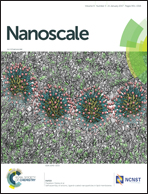Creep- and fatigue-resistant, rapid piezoresistive responses of elastomeric graphene-coated carbon nanotube aerogels over a wide pressure range†
Abstract
Lightweight, flexible piezoresistive materials with wide operational pressure ranges are in demand for applications such as human physical activity and health monitoring, robotics, and for functional interfacing between living systems and wearable electronics. Piezoresistivity of many elastomeric foams of polymers and carbon allotropes satisfies much of the required characteristics for these applications except creep and fatigue resistance due to their viscoelasticity, critically limiting the reliability and lifetime of integrated devices. We report the piezoresistive responses from aerogels of graphene-coated single-walled carbon nanotubes (SWCNTs), made using a facile and versatile sol–gel method. Graphene crosslinks the junctions of the underlying random network of SWCNTs, generating lightweight elastomeric aerogels with a mass density of ≈11 mg mL−1 (volume fraction ≈7.7 × 10−3) and a Young's modulus of ≈0.4 MPa. The piezoresistivity of these aerogels spans wide compressive pressures up to at least 120 kPa with sensitivity that exhibit ultrafast temporal responses of <27 ms and <3% delay ratio over 104 compressive loading–unloading cycles at rates between 0.1–10 Hz. Most importantly, the piezoresistive responses do not show any creep at least for 1 hour and 80 kPa of compressive static loading. We suggest that the fatigue- and creep-resistant, ultrafast piezoresistive responses of these elastomeric aerogels are highly attractive for use in dynamic and static lightweight, pressure sensing applications such as human activity monitoring and soft robotics.



 Please wait while we load your content...
Please wait while we load your content...